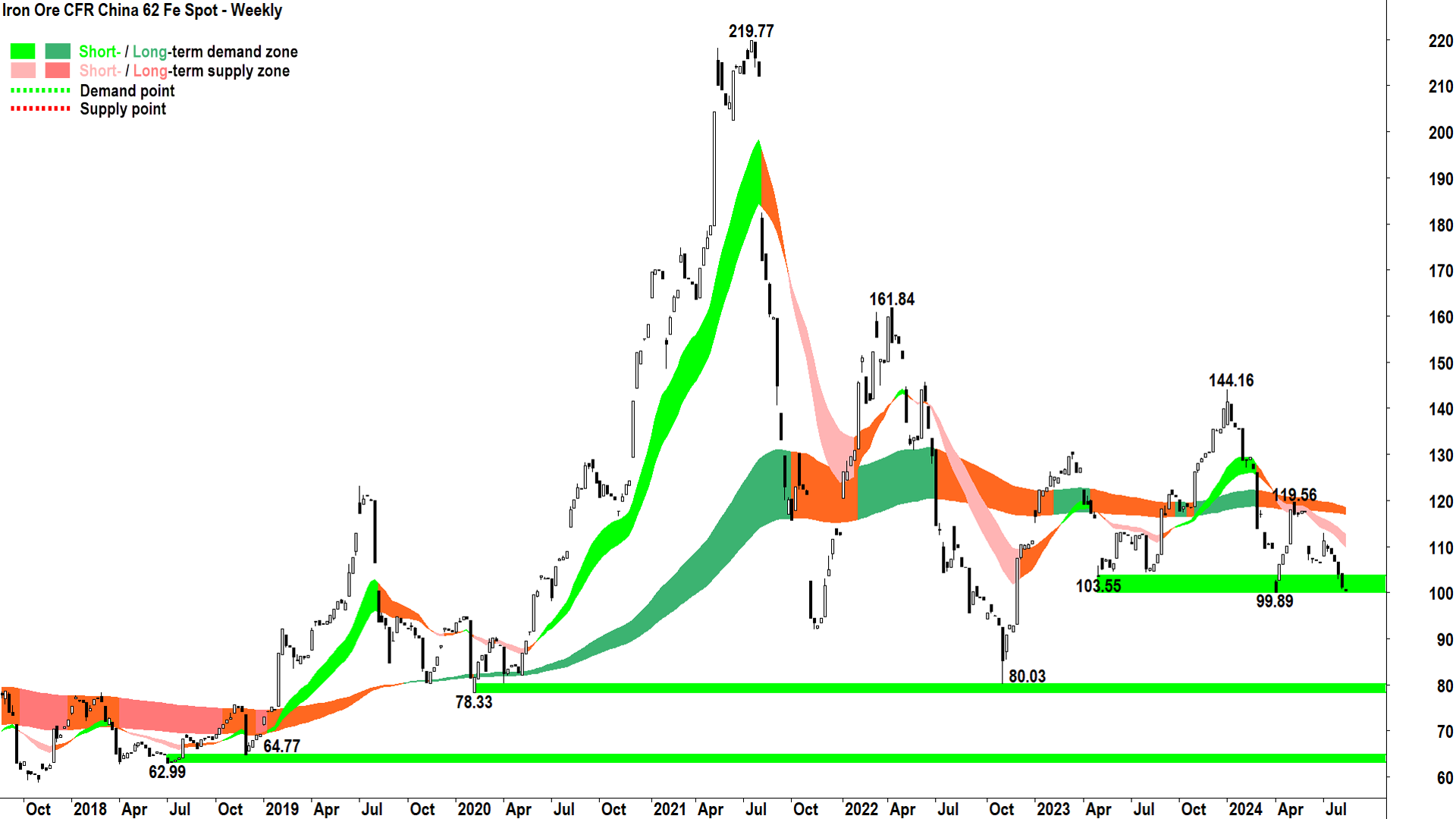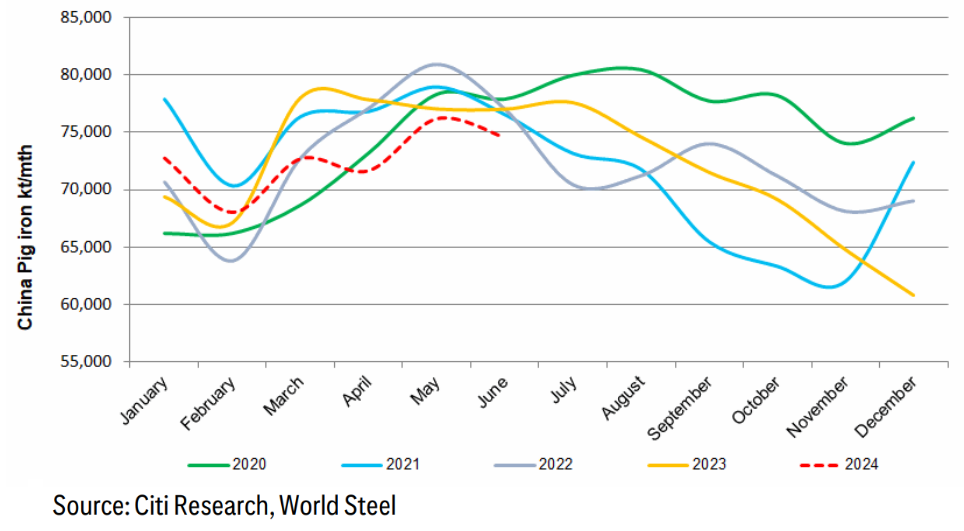Will the iron ore price crack $100 and trigger more pain for BHP, RIO, MinRes, and Fortescue?
"Cost support"
That’s what the near- and long-term fate of the iron ore price is all about, according to analysts at the major brokers as well as major Australian producers like BHP Group (ASX: BHP) and Rio Tinto (ASX: RIO).
If you own shares in any of the ASX iron ore producers, it’s a term you better get familiar with. The basic concept can be summarised in 3 bullet points.
1. China is the world's biggest consumer of iron ore, it uses it to make steel so it can build stuff like washing machines, cars, bridges, empty apartment towers etc.
2. China sources iron ore mainly from the “majors”, i.e., low-cost producers in Australia, Brazil, and South Africa, and supplements this depending on requirement and price from “non-majors”, i.e., higher-cost producers including domestically, as well as India, Russia, Canada, Mongolia etc.
3. The “cost curve support” or just “cost support” refers to a theoretical floor-cost of production where production at the non-majors becomes uneconomical, therefore limiting supply
The key piece of the puzzle is in bullet point 3.1. It’s the idea that when the iron ore price is higher, China tends to import more cheaper but lower-grade ore from the majors, and conversely, when the iron ore price is lower it tends to import more (now cheaper) higher grade ore from the majors.
Point 3.2 would be this: The majors (who all produce comfortably below US$30/t) are protected by the inferior grades and higher costs of the non-majors…up to a point…hence the concept of “cost support”.
And there, investors in ASX iron ore stocks, is the iron ore market in a nutshell. The concept of cost support – and exactly where it lies – is crucial for Australian iron ore producers because it determines their margin, and therefore their level of long term profitability.
Where is cost support for the iron ore price?
This is the question on the tips of investors' lips lately as the iron ore price has slumped back to US$100/t is: Where exactly is cost support?
From a purely technical analysis perspective, I propose that we’re now at a critical support point for the iron ore price. There is a zone of historical demand between $99.89 and $103.55. The price has rallied at least twice from this level.

The growing black weekly candles suggest the supply-side is increasing its control of the iron ore price in the very short term, and the broader trend of falling peaks and troughs and the falling short term downtrend ribbon confirms a broader picture of excess supply.
Should the iron ore price close below $99.89 demand support, the next zone of historical demand is not until $78.33 and $80.03. There’s little in the way of price action between $99.89 and $80.03, and in my experience, this tends to lend itself to a rapid price decline between the two points.
Ok, now that I’ve scared the pants off you (don’t worry, as a West-Aussie who knows the entire local economy depends on this stuff – my pants also!), let’s check the fundamentals, or at least – check the opinions of those who best know them.
The general consensus here is that US$100/t likely is the relevant cost support point:
Rio Tinto management tipped US$100/t in the analyst call following their most recent June quarter activities report
BHP said in February in an article on its website that it’s estimate of cost support is “$80–100/t CFR”
As for the big brokers, Golman Sachs (US$90-95/t) and UBS (US$90-100/t) have each pegged it as recently as last month to also be there or thereabouts
Commodities think tank Wood Mackenzie noted that the 90th percentile of iron ore producers operate at a cash cost of US$86/tonne in their latest global cost curve report
I have just received a research report from Citi titled “The iron ore debate rolls on” that suggests general market thinking might be proved wrong towards the end of this year. Citi notes that a seasonal downturn in November/December in China’s pig iron production could be the catalyst to tip the balance in an already fragile demand-supply environment.
China’s pig iron and steel production is highly seasonal, notes Citi, peaking in May and then tailing off to a trough late in the year. Citi tips that second half output could be down around 8% on the first half, and this during a year where China’s pig iron production is at its lowest since 2020.

When you add in greater substitution from scrap, as well as generally declining steel consumption in China due to their ailing property sector, Citi suggests the near term outlook for the iron ore price is a “challenge”. Longer term (from 2026 onwards) when Rio Tinto’s massive Simandou mine in the Republic of Guinea in Africa comes on line, China will have plenty of lower cost higher grade ore to choose from, says Citi.
You could say that Simandou is the elephant in the iron ore price room. At full ramp up from 2028, Simandou will eventually bring around 120 mtpa to market – the equivalent of around 10% of China’s 2023 iron ore consumption. Citi believes the “best case outcome” is that this extra supply enables China to shutter its own high-cost-low-grade (and extremely dirty) domestic iron ore production, “much like it has done with imported bauxite”.
The not-so-best case outcome is that impending Simandou supply is another significant peg of support for “the longer term iron ore bear story”, notes the broker.
This article first appeared on Market Index on Wednesday 14 August 2024.
5 topics
4 stocks mentioned

